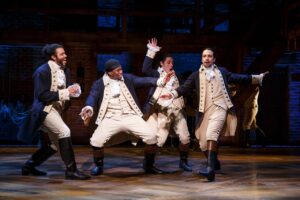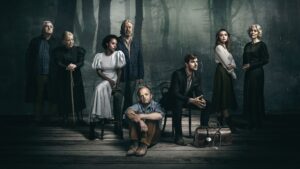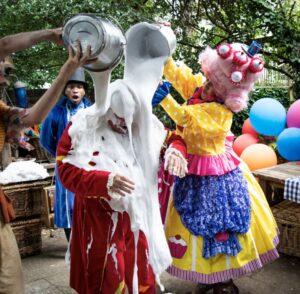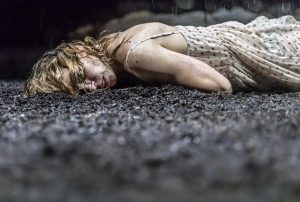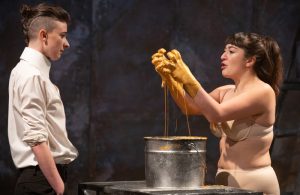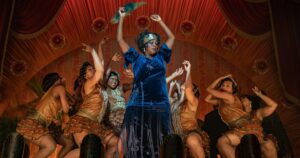Top 10 People Of Colour in Musicals
The Andrew Lloyd Webber Foundation recently criticised the lack of opportunity given to black and minority ethnic performers in drama schools. If we don’t have more diversity in our theatres, we miss our opportunity to see the best possible shows on stage. So, let’s celebrate the people of colour who have made a major contribution to the stage musical.
10. Eubie Blake & Noble Sissel
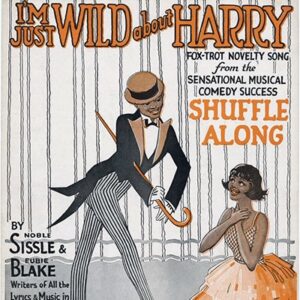 These days blind casting, whereby, unless the part is written for a specific skin colour, you choose the best person for the role regardless of colour, has made a huge difference to the number of people of colour on stage. But racial discrimination was rife in the past. A hundred years ago, black performers were restricted to a few slots on the Broadway stage- no more than one act per show.
These days blind casting, whereby, unless the part is written for a specific skin colour, you choose the best person for the role regardless of colour, has made a huge difference to the number of people of colour on stage. But racial discrimination was rife in the past. A hundred years ago, black performers were restricted to a few slots on the Broadway stage- no more than one act per show.
Frustrated by the situation, the songwriting team of Eubie Blake and Noble Sissel, got together with some other black artists and wrote their own musical comedy Shuffle Along. They managed to hire a theatre right on the edge of the theatre district. The artists feared a reaction from white audiences against a portrayal of black people in romantic situations, but this was the beginning of the jazz age and audiences lapped up the genuine article.
Shuffle Along was a huge success running for 504 performances with many spinoffs. It launched or at least helped the careers of, among others, Paul Robeson and Josephine Baker. The biggest hit from the show was I’m Just Wild About Harry.
9. Adelaide Hall
Born in 1901, Adelaide Hall was a major star in the Harlem scene of the 1920s. In 1938, faced with a lot of prejudice in the States, she moved to the UK. A year later, just after the Second World War broke out, she took part in the BBC’s first live show to be broadcast worldwide. She became a British resident and it was here that she added musicals to her resumé. In 1951 she appeared in Kiss Me Kate and then two more West End musicals before returning to Broadway to appear in the Lena Horne vehicle Jamaica and in the premiere of Rodgers and Hammerstein’s Flower Drum Song. Live concerts and recordings remained her big passion and in 2003 at the age of 102 she entered the Guinness Book Of Records as the world’s most enduring recording artist.
8. Sharon D Clarke
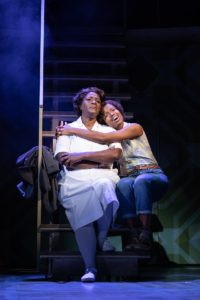
Sharon D Clarke is one of the UK’s leading ladies. She began her West End career as General Cartwright in 1996 in Guys And Dolls. Over the years she’s been Killer Queen in We Will Rock You, Mama Morton in Chicago, Oda Mae Brown in Ghost and the star of the National Theatre production of Ma Rainey’s Black Bottom. Probably most will remember her as Rafiki in The Lion King, a musical that did much to give opportunities to black performers. Her leading role in the Chichester production of Caroline, Or Change won her an Olivier Award, one of three she’s won. In 2017 she was awarded an MBE for services to drama.
7. Gary Wilmot
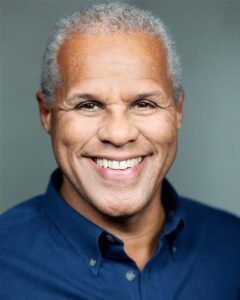 Gary Wilmot is another of the UK’s greatest musical stars. His musicals career began with the lead role in Me And My Girl in the West End. One of his earliest roles was as Joe in Carmen Jones, the musical in which Oscar Hammerstein wrote new lyrics for a black cast to Bizet’s music. In all he’s taken part in over two dozen musicals and played Fagin in Oliver!, Caractacus Potts in Chitty Chitty Bang Bang and Billy Flynn in Chicago. His brilliance at comedy roles may have held him back from the more serious parts his voice and acting ability make him more than capable of.
Gary Wilmot is another of the UK’s greatest musical stars. His musicals career began with the lead role in Me And My Girl in the West End. One of his earliest roles was as Joe in Carmen Jones, the musical in which Oscar Hammerstein wrote new lyrics for a black cast to Bizet’s music. In all he’s taken part in over two dozen musicals and played Fagin in Oliver!, Caractacus Potts in Chitty Chitty Bang Bang and Billy Flynn in Chicago. His brilliance at comedy roles may have held him back from the more serious parts his voice and acting ability make him more than capable of.
6. Ethel Waters
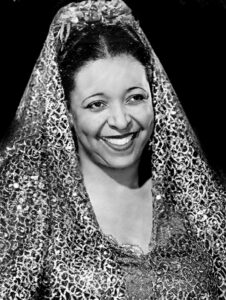 After she starred in Irving Berlin’s As Thousands Cheer, there was a time in the 1930s when Ethel Waters was the highest paid performer on Broadway- that’s not highest paid black performer, that’s highest paid performer of all. She began to branch out into large and small screens and was the first African American to have their own TV Show. Her biggest hit on Broadway came in 1940 with Cabin In The Sky.
After she starred in Irving Berlin’s As Thousands Cheer, there was a time in the 1930s when Ethel Waters was the highest paid performer on Broadway- that’s not highest paid black performer, that’s highest paid performer of all. She began to branch out into large and small screens and was the first African American to have their own TV Show. Her biggest hit on Broadway came in 1940 with Cabin In The Sky.
5. George C Wolfe
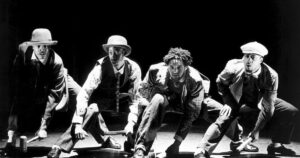
Director George C Wolfe has directed twenty Broadway shows from Jelly’s Last Jam featuring the music of Jelly Roll Morton in 1992 to Caroline, Or Change to the revival of Shuffle Along. Perhaps his most famous Broadway show is Bring In Da Noise, Bring In Da Funk which he conceived and directed in 1996. It tells the story of the black experience in America from slavery to hip hop primarily through the medium of tap, choregraphed by the great Savion Glover. Wolfe has received 23 Tony Nominations and won five. He also directs movies, most recently directed Ma Rainey’s Black Bottom which is up for an Oscar.
4. Paul Robeson
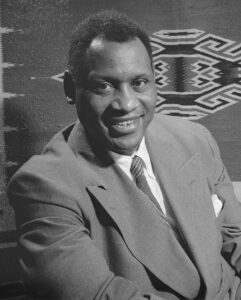 In the early days of Broadway, it was almost impossible for black people to get exposure on what was appropriately nicknamed ‘The Great White Way’. But some white creators of shows were determined that people of colour should have their proper place in stage musicals. George Gershwin, for example, wrote Porgy And Bess in 1935, with the bets of intentions despite subsequent criticism, and Oscar Hammerstein introduced people of colour and questions about racism into a number of his musicals.
In the early days of Broadway, it was almost impossible for black people to get exposure on what was appropriately nicknamed ‘The Great White Way’. But some white creators of shows were determined that people of colour should have their proper place in stage musicals. George Gershwin, for example, wrote Porgy And Bess in 1935, with the bets of intentions despite subsequent criticism, and Oscar Hammerstein introduced people of colour and questions about racism into a number of his musicals.
Back in 1927, Hammerstein co-wrote Show Boat with Jerome Kern which was a groundbreaker, not only because it told a serious story but because it was the first musical to feature a mixed black and white cast on stage together. The part of Joe, a stevedore, was expanded as a showcase for my Paul Robeson. Unfortunately, he was unavailable to take part in the Broadway premiere but when the show opened in London he took his rightful place in the cast. The show became the Theatre Royal’s most profitable production of the 20th century.
At a time when black actors were mainly playing servants, Robeson brought a much needed dignity to black acting, taking on major roles in cinema and on stage, including a legendary Othello.
3. Lea Salonga
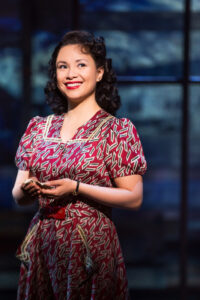
The Filipina soprano Lea Salonga was the original Kim in Miss Saigon for which she won an Olivier Award. She reprised the role on Broadway and became the first Asian woman to win a Tony. It launched her career on Broadway where she also played the roles of Eponine and Fantine in Les Miserables. She has continued to play leading roles on Broadway and in the Far East including Mrs Lovett in Sweeney Todd.
Notably, she had a starring role in 2015 in the musical Allegiance which explored the internment of Japanese Americans during World War 2.
2. Audra MacDonald
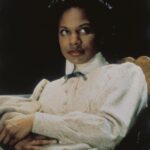
Audra Macdonald is the first and only performer ever to win six Tony Awards.
Trained as an operatic soprano, her Broadway successes include her performance in the revival of Carousel back in 1994, Ragtime in 1998, 110 in the Shade in 2007, Porgy And Bess in 2012. Perhaps her greatest role was as Billie Holliday in Lady Day at Emerson’s Bar And Grill in 2014.
1. Hamilton
We started in 1921 with a musical that brought the first all black cast to Broadway. A hundred years later, the biggest show on Broadway and the West End is another groundbreaking musical featuring a cast almost exclusively of people of colour. Thanks to its creator, Lin-Manuel Miranda, Hamilton has set a new standard for colour blind casting by employing mainly non-white actors to play people who were historically white. This casting provides a real and metaphorical illustration of the contribution of people from immigrant backgrounds can make to their adopted country, both in the USA but also here in great Britain. The number one is not one individual but all the casts that have made Hamilton a showcase for the talent of people of colour.
Two To Watch For
Here are two young people of colour destined to be major musical stars.
Miriam-Teak Lee had just left drama school when she blew everyone away with her performance in the Open Air Theatre production of On The Town. Then she got a part in the ensemble of original London production of Hamilton, followed by the lead role in the jukebox musical & Juliet, again giving a jaw-dropping performance for which she rightly for which she won an Olivier Award.
American Eva Noblezada has already played Kim in the 2014 London and subsequent Broadway revivals of Miss Saigon. She follows in the footsteps of Lea Salonga 25 years ago when she originated that role and has also followed her in playing Eponine in Les Miserables. Recently she played Eurydice in Hadestown to much acclaim. Hopefully we won’t lose her to the screen but her starring role in Yellow Rose was unforgettable.
You can see performances by many of the artists featured by visiting the YouTube channel One Minute Theatre Reviews and clicking on Playlists where you’ll find Top 10 People Of Colour in Stage Musicals.
The Box Office Radio podcast My Top Ten People of Colour in Stage Musicals presented by Paul Seven Lewis is available on mixcloud.com
